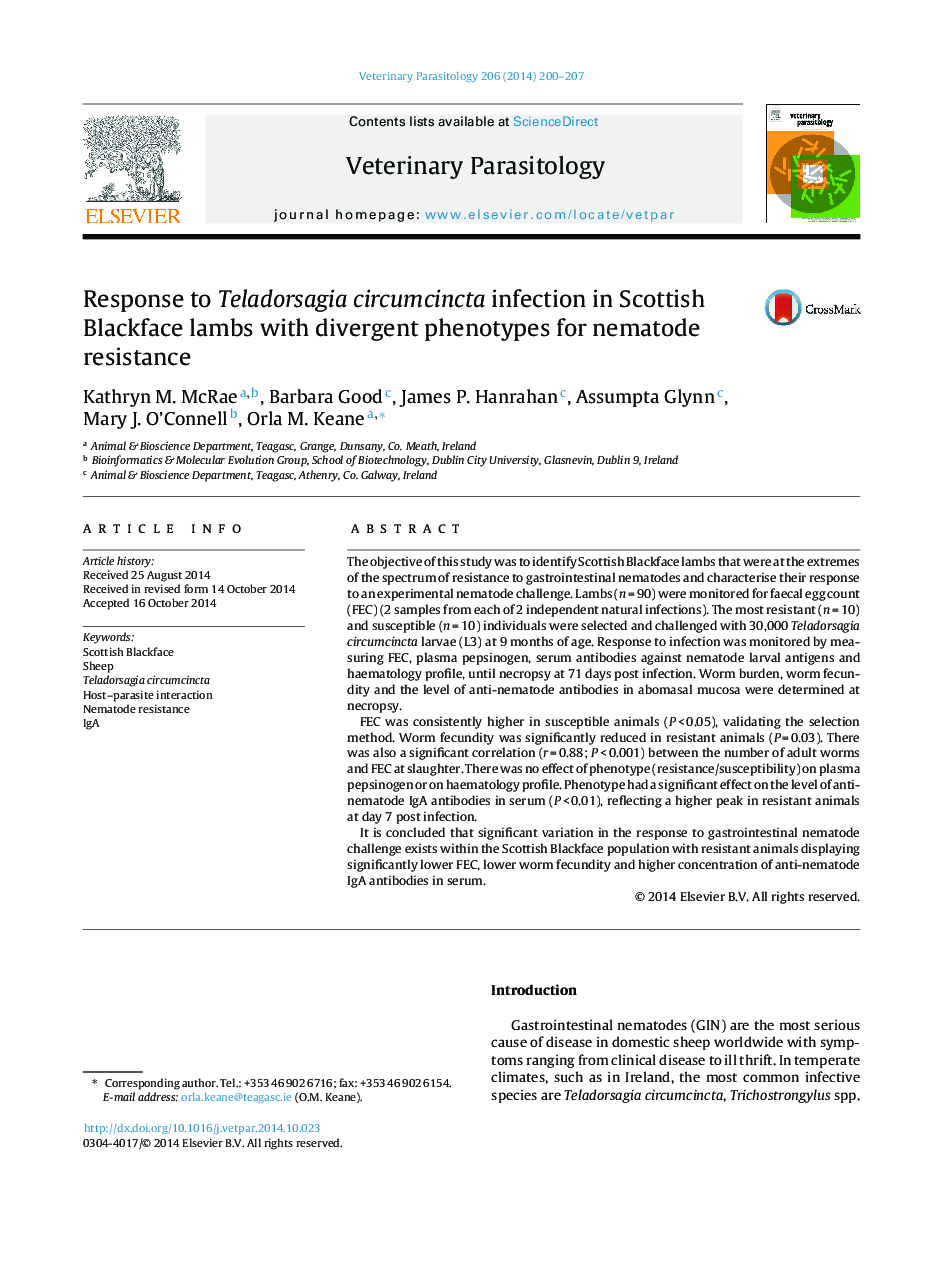| Article ID | Journal | Published Year | Pages | File Type |
|---|---|---|---|---|
| 5802838 | Veterinary Parasitology | 2014 | 8 Pages |
â¢We developed a model to reliably identify nematode resistant and susceptible lambs.â¢We found that resistant lambs had significantly lower faecal egg count.â¢We determined that resistant lambs did not have significantly lower worm burden but did display significantly lower worm fecundity.â¢We found that resistant lambs had higher levels of both circulating and local anti-nematode IgA.
The objective of this study was to identify Scottish Blackface lambs that were at the extremes of the spectrum of resistance to gastrointestinal nematodes and characterise their response to an experimental nematode challenge. Lambs (n = 90) were monitored for faecal egg count (FEC) (2 samples from each of 2 independent natural infections). The most resistant (n = 10) and susceptible (n = 10) individuals were selected and challenged with 30,000 Teladorsagia circumcincta larvae (L3) at 9 months of age. Response to infection was monitored by measuring FEC, plasma pepsinogen, serum antibodies against nematode larval antigens and haematology profile, until necropsy at 71 days post infection. Worm burden, worm fecundity and the level of anti-nematode antibodies in abomasal mucosa were determined at necropsy.FEC was consistently higher in susceptible animals (P < 0.05), validating the selection method. Worm fecundity was significantly reduced in resistant animals (P = 0.03). There was also a significant correlation (r = 0.88; P < 0.001) between the number of adult worms and FEC at slaughter. There was no effect of phenotype (resistance/susceptibility) on plasma pepsinogen or on haematology profile. Phenotype had a significant effect on the level of anti-nematode IgA antibodies in serum (P < 0.01), reflecting a higher peak in resistant animals at day 7 post infection.It is concluded that significant variation in the response to gastrointestinal nematode challenge exists within the Scottish Blackface population with resistant animals displaying significantly lower FEC, lower worm fecundity and higher concentration of anti-nematode IgA antibodies in serum.
